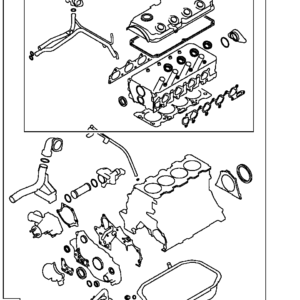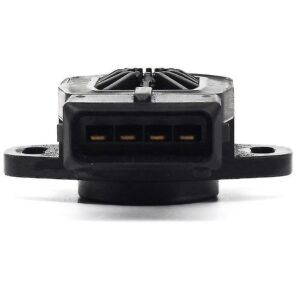Title: Head Gasket: The Guardian of Engine Integrity
In the intricate ecosystem of automotive engineering, where power meets precision, the head gasket emerges as a silent sentinel, guarding the integrity of the engine with steadfast resilience. Despite its modest appearance, this unassuming component plays a pivotal role in maintaining the seal between the engine block and cylinder head, ensuring optimal combustion, compression, and performance. In this blog, we’ll delve into the significance of the head gasket, how it works, its importance in engine operation, and its indispensable contribution to the driving experience.
### Unveiling the Head Gasket
The head gasket is a critical component of the engine assembly in every vehicle. Positioned between the engine block and cylinder head, its primary function is to create a tight seal that prevents the leakage of combustion gases, coolant, and oil between the cylinder head and engine block.
### How the Head Gasket Works
The head gasket is typically made of durable materials such as metal, composite materials, or multi-layer steel. It is designed to withstand the extreme temperatures and pressures generated during engine operation while maintaining a tight seal between the cylinder head and engine block. The head gasket forms a barrier that prevents combustion gases from escaping into the coolant passages or oil galleries and vice versa.
### Importance of the Head Gasket in Engine Operation
1. **Sealing Combustion Chambers**: The head gasket plays a crucial role in sealing the combustion chambers, ensuring that the high-pressure combustion gases generated during engine operation remain contained within the cylinders. This prevents leakage and loss of compression, which can lead to reduced engine performance and efficiency.
2. **Coolant and Oil Sealing**: In addition to sealing the combustion chambers, the head gasket also seals the coolant passages and oil galleries between the cylinder head and engine block. This prevents coolant and oil from mixing and ensures proper lubrication and cooling of engine components, preventing overheating and damage.
3. **Maintaining Compression**: Proper compression is essential for efficient engine operation and power output. The head gasket maintains compression by sealing the cylinder head to the engine block, preventing leakage of combustion gases and maintaining the pressure required for optimal combustion and performance.
### Signs of a Failing Head Gasket
– **Coolant Loss**: Coolant leaks, indicated by low coolant levels or visible coolant leaks around the cylinder head, may indicate a failing head gasket.
– **Engine Overheating**: Engine overheating, indicated by high coolant temperature readings on the dashboard or warning lights, may occur if the head gasket is leaking coolant into the combustion chambers.
– **White Smoke from Exhaust**: White smoke coming from the exhaust pipe may indicate coolant leaking into the combustion chambers and being burned along with the fuel.
### Conclusion
In the intricate tapestry of engine integrity and performance, the head gasket stands as a silent guardian, ensuring the tight seal that keeps the engine running smoothly and efficiently. From sealing combustion chambers to preventing coolant and oil leaks, the role of the head gasket in maintaining engine health cannot be overstated. As automotive technology continues to advance, the importance of reliable head gaskets in ensuring vehicle reliability and longevity remains undeniably critical, ensuring that drivers embark on their journeys with confidence and peace of mind.
Only 3 left in stock (can be backordered)
$18,926.31
Title: Head Gasket: The Guardian of Engine Integrity
In the intricate ecosystem of automotive engineering, where power meets precision, the head gasket emerges as a silent sentinel, guarding the integrity of the engine with steadfast resilience. Despite its modest appearance, this unassuming component plays a pivotal role in maintaining the seal between the engine block and cylinder head, ensuring optimal combustion, compression, and performance. In this blog, we’ll delve into the significance of the head gasket, how it works, its importance in engine operation, and its indispensable contribution to the driving experience.
### Unveiling the Head Gasket
The head gasket is a critical component of the engine assembly in every vehicle. Positioned between the engine block and cylinder head, its primary function is to create a tight seal that prevents the leakage of combustion gases, coolant, and oil between the cylinder head and engine block.
### How the Head Gasket Works
The head gasket is typically made of durable materials such as metal, composite materials, or multi-layer steel. It is designed to withstand the extreme temperatures and pressures generated during engine operation while maintaining a tight seal between the cylinder head and engine block. The head gasket forms a barrier that prevents combustion gases from escaping into the coolant passages or oil galleries and vice versa.
### Importance of the Head Gasket in Engine Operation
1. **Sealing Combustion Chambers**: The head gasket plays a crucial role in sealing the combustion chambers, ensuring that the high-pressure combustion gases generated during engine operation remain contained within the cylinders. This prevents leakage and loss of compression, which can lead to reduced engine performance and efficiency.
2. **Coolant and Oil Sealing**: In addition to sealing the combustion chambers, the head gasket also seals the coolant passages and oil galleries between the cylinder head and engine block. This prevents coolant and oil from mixing and ensures proper lubrication and cooling of engine components, preventing overheating and damage.
3. **Maintaining Compression**: Proper compression is essential for efficient engine operation and power output. The head gasket maintains compression by sealing the cylinder head to the engine block, preventing leakage of combustion gases and maintaining the pressure required for optimal combustion and performance.
### Signs of a Failing Head Gasket
– **Coolant Loss**: Coolant leaks, indicated by low coolant levels or visible coolant leaks around the cylinder head, may indicate a failing head gasket.
– **Engine Overheating**: Engine overheating, indicated by high coolant temperature readings on the dashboard or warning lights, may occur if the head gasket is leaking coolant into the combustion chambers.
– **White Smoke from Exhaust**: White smoke coming from the exhaust pipe may indicate coolant leaking into the combustion chambers and being burned along with the fuel.
### Conclusion
In the intricate tapestry of engine integrity and performance, the head gasket stands as a silent guardian, ensuring the tight seal that keeps the engine running smoothly and efficiently. From sealing combustion chambers to preventing coolant and oil leaks, the role of the head gasket in maintaining engine health cannot be overstated. As automotive technology continues to advance, the importance of reliable head gaskets in ensuring vehicle reliability and longevity remains undeniably critical, ensuring that drivers embark on their journeys with confidence and peace of mind.
| Warehouse | Inventory at warehouse 2 |
|---|



Get E-mail updates about our latest products and special offers.
Sensors and More is Jamaica’s ultimate online auto parts store. Established in 2020, we specialize in genuine electrical parts for Japanese, Read more…
Reviews
There are no reviews yet.